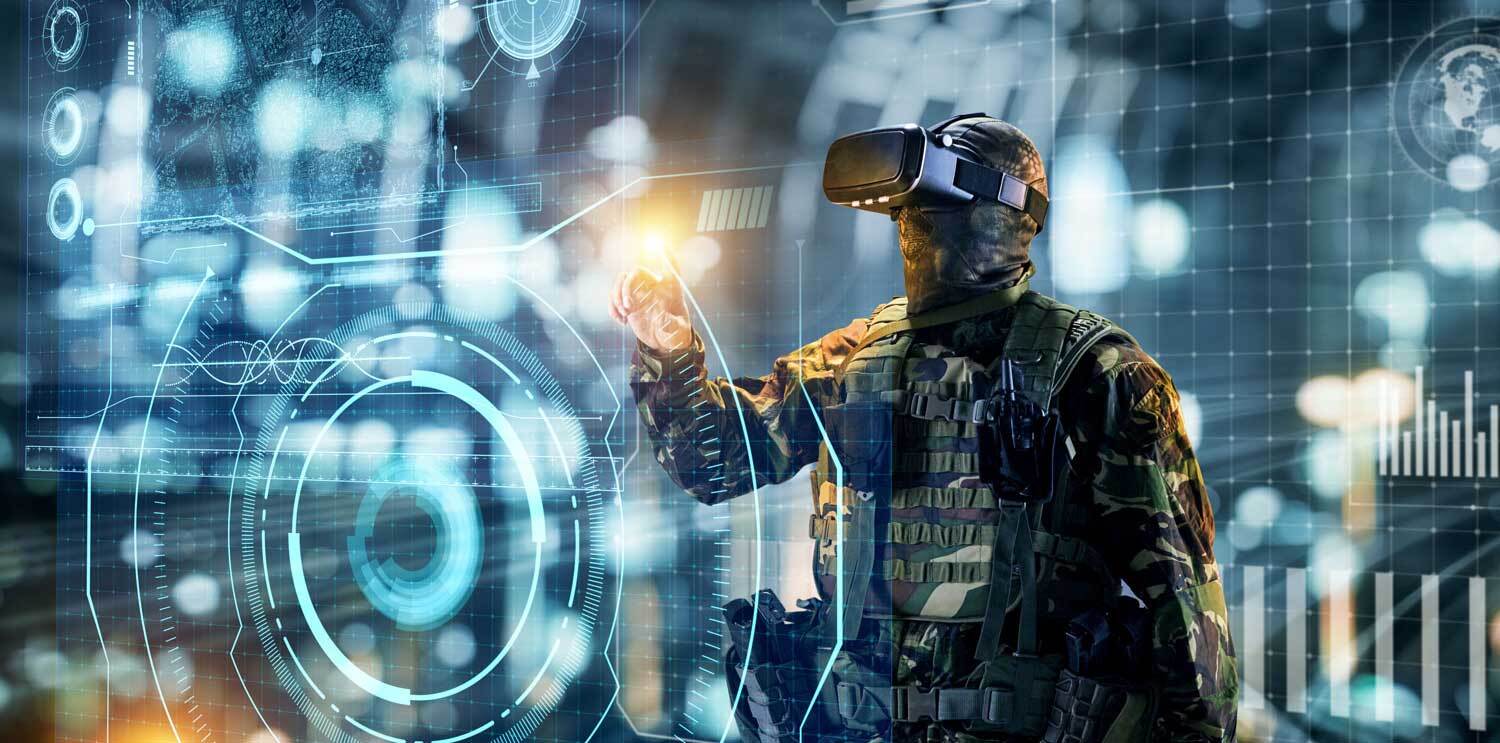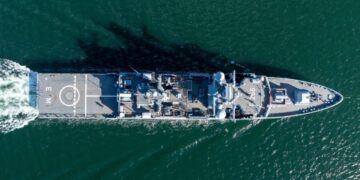What are drones?
Everyone is now familiar with drones - primarily from the private sector. Most people generally associate the term with a flying drone, i.e. a remote-controlled aircraft. But other Unmanned vehiclesWhether travelling, diving, swimming or flying, they are referred to as drones. In the leisure sector, we encounter drones in the form of toy drones, quadrocopters, remote-controlled cars or lawn mowing robots, for example.
The characteristic feature of drones is that they are used without a crew, which would often not even be possible due to their compact size. This means that the vehicles are controlled remotely - either
- by a person operating a corresponding control unit, or
- by an integrated or remote computer.
The machines therefore operate partially or fully autonomously. Most drones are equipped with a camera. This enables them to transmit still images or videos on the one hand and to be used safely and reliably outside the field of vision on the other. In addition, the commercial or military devices in particular have other basic features, such as a microphone for voice control, a GPS and WLAN module and state-of-the-art computer technologies.
When equipping the drones, a distinction is made between civilian and military use - because the models for military service have to fulfil completely different requirements than those for hobby use.
What role do drones play in the navy?
Digitalisation, artificial intelligence and innovative technologies are playing an important role in the Bundeswehr and especially in the navy. Vehicles without a crew are becoming increasingly relevant as automated systems. This development is not unique to the German Armed Forces: In the last two decades in particular, a more intensive integration of unmanned systems can be seen across the alliance in all NATO partners. For example, the Chief of Staff of the French Navy declared in 2019 that the French government intends to increase the number of unmanned systems from 50 units at the time to 1,200 units by 2030. Whether on land, high in the sky or deep underwater - drones are deployed around the clock for the military. From domestic exercises to foreign missions for reconnaissance, surveillance and warfare, these unmanned vehicles fulfil important military functions.
Are drones autonomous systems?
Drones have been used by the military for more than two decades - and their use has been the subject of debate for just as long. The use of armed drones in particular is highly controversial. Critics in the military and in politics, but also among the civilian population, fear the danger that can emanate from an autonomous system.
The fact is, however, that the drones used by the military are generally not autonomous, but rather Automated systems which are subject to programmed algorithms and mechanical constraints. This means that the unmanned machines are always deployed under the control or close supervision of soldiers. The drones can be influenced, monitored and even stopped at any time by the soldiers in charge. The final deployment decision therefore lies with the troops.
Furthermore, it must not be forgotten that drones - whether in the private or military sector - may only be used in compliance with strict regulations and national law.
What are drones used for by the navy, the military and the Bundeswehr?
Military drones are used to support conventional manned vehicles across the entire spectrum of Bundeswehr and naval operations. Camera drones play a particularly important role in war and crisis regions. They are used for reconnaissance, surveillance and protection:
- Clarification: Camera drones help to reconnoitre German operational areas by creating situational images and generating target data.
- Monitoring: Keeping an eye on the situation even out of sight, in the remotest corners and under the surface of the sea - this is what drones make possible and thus help in war, in the fight against piracy and in military disputes and conflicts.
- Protection: With their reconnaissance work, the drones protect the armed forces and troops and increase security for citizens.
What are the advantages of unmanned aerial and underwater drones? What are the weak points?
| Advantages of using drones | Disadvantages of using drones |
| + Increase the deployment range of the troops + Increased performance of the armed forces + faster response time + Protection of soldiers + Security for the state and citizens + the risk for the troops changes qualitatively and quantitatively + Reduction of the inhibition to kill + Outstanding, significantly longer standing times for reconnaissance and monitoring + More spatial and temporal flexibility for soldiers | - Machines cannot replace the tactical, empathic and ethical skills of a human being - Resistance from law and politics |
Unmanned systems are becoming increasingly relevant in military operations and are significantly expanding the Bundeswehr's capabilities thanks to advancing innovative technologies. Nevertheless, drones are not a "wonder weapon" - as machines, they reach their limits and do not only bring advantages. An intelligent, deliberate mix of manned and unmanned systems therefore continues to form the basis for successful military missions.
What different drone models are there in the military?
In the military, drones are mainly divided into "Unmanned Aerial Vehicle" (UAV) and "Unmanned Aerial System" (UAS) for flying drones such as 1. vertical take-off helicopters (VUAS) 2. fixed-wing aircraft (fixed-wing UAS) 3. "Unmanned Combat Air System" (UCAS) for combat aircraft "Unmanned Underwater Vehicles" (UUV) for underwater vehicles "Unmanned Surface Vessels" (USV) for (armed) surface vehicles
Unmanned aerial vehicles (UAV) and aerial systems (UAS)
1. unmanned helicopters (VUAS)
Drone type: Flying drone with vertical take-off and landing system Model examples:
- VSR 700 (Vertical Surveillance Rotorcraft) from Airbus (currently still undergoing trials, 6.2 m long, 700 kg, approx. 10 hours flight time with a standard payload of 150 kg)
- Skeldar V-200 from UMS Skeldar (4 m length, 170 kg, approx. 5 hours flight time with a payload capacity of 65 kg, service ceiling 3,000 m)
Skills/specialities:
- Vertical take-off, unmanned aerial vehicles
- increase the detection range of naval vessels
- Significantly smaller/space-saving than a manned helicopter
- Long service life
Areas of application:
- on frigates and destroyers
- On-board reconnaissance and surveillance missions
- ISTAR missions (Intelligence, Surveillance, Target Acquisition and Reconnaissance)
- Search and rescue missions
- Patrols to curb piracy
2. fixed-wing aircraft (fixed-wing UAS)
Drone type: Flying drone; subdivision into
- MALE (UAS with medium flight ceiling and high endurance) and
- HALE (UAS with high flight ceiling and great endurance)
Model examples:
- MQ-9B SeaGuardian from the US company General Atomics (MALE; equipped with multi-mode radar system, AIS receiver, camera system and 8 payload anchors under the wings, e.g. for air-to-ground weapons; 12,300 m service ceiling; max. flight time 40 hours)
- RPAS (Remotely Piloted Aircraft System) from Airbus (currently in planning, MALE; 11 t weight, 2,300 kg payload capacity, 4 payload anchors under the wings, e.g. for air-to-ground weapons, 13,700 m service ceiling)
Skills/specialities:
- High flight endurance
- Medium to high altitude
Areas of application:
- Maritime reconnaissance
- Monitoring
- Ship identification
- ISTAR missions (Intelligence, Surveillance, Target Acquisition and Reconnaissance)
3. unmanned combat aircraft (UCAS)
Drone type: Combat drone Model examples:
- Neuron from Dassault (prototype, stealth combat drone, 9.5 m long, 5 tonnes in weight, 2 bombs in payload chamber)
Skills/specialities:
- Remote control of the aircraft via escort vehicle or ground station
- suitable for aircraft carriers
Areas of application:
- Introduction in 2040
Unmanned underwater vehicles (UUV)
Drone type: Diving drone Model examples:
- SeaFox (3 variants: unarmed I-vehicle for mine detection and investigation of ship hulls and harbours, C-vehicle for mine destruction using shaped charge explosives (one-way system), T-vehicle for training the operating crew; each UUV has a length of 1.3 m, 43 kg, 300 m diving depth, max. operating time 100 minutes, remote control via fibre optic cable)
- SeaCat (depending on equipment 2.5-3.5 m length, 130-220 kg weight, 600 m diving depth, max. operating time 20 hours, remote-controlled or autonomous (pre-programmed) application)
Skills/specialities:
- Starts from manned boats, USVs or low-flying helicopters
- Armed forces are kept out of the danger zone of mines
Areas of application:
- Mine hunting
- Demining
- Submarine tracking
- Surveying the seabed
Unmanned surface vehicles (USV)
Drone type: Floating drone Model examples:
- ARCIMS (ATLAS Remote Combined Influence Minesweeping System) from Atlas Elektronik (11 m long, 10 t weight, can be equipped with SeaFox, remote-controlled or autonomous (pre-programmed) application)
Skills/specialities:
- Serves as a carrier platform for UUV
- Armed forces are kept out of the danger zone of mines
Areas of application:
- Mine hunting
- Demining
Armed, unmanned surface vehicles (USV)
Drone type: Floating drone Model examples:
- Seagull from Elbit Systems (12 m long, equipped with radar, EO/IR camera and AIS, modular equipment with bow-mounted weapon station possible, max. speed of 32 knots, max. operating time 4 days, remote-controlled or autonomous (pre-programmed) application)
Skills/specialities:
- Starts from frigates or corvettes
Areas of application:
- Harbour and coastal protection
- Escort for ships
- Defence
- U-Hunt
- Mine hunting
What could the prospects for the future look like?
The fact that drones are becoming increasingly relevant for the German military is also demonstrated by the defence cooperation agreement signed with France in 2018. The Franco-German Council of Ministers agreed on the joint development of a submarine hunting and maritime reconnaissance system. This "Maritime Airborne Warfare System" (MAWS) is to become a future-proof, integral component of the "Future Combat Air System" (FCAS). An important guideline of this agreement is that the MAWS creates co-operation between manned and unmanned systems. It is precisely this manned-unmanned teaming that will become even more crucial in the future. A concept needs to be developed in which both manned and unmanned systems occupy the position in which they can ensure the best possible fulfilment of the mission. Technologies will continue to develop in the future. Range, speed of action and the range of options for action will increase, so that soldiers will increasingly become the system's guardians - yet the soldier will remain indispensable as the system controller and observer. In the long term, this development will also have an impact on the training and profession of naval soldiers. Digital possibilities, such as flight simulators and virtual reality, are already playing an important role. The correct use of these technologies will become an important cornerstone of naval work in the future.












0 Kommentare